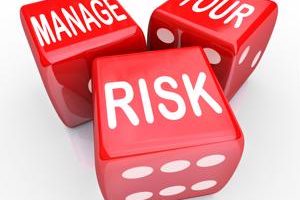
Few events in world history have so fundamentally altered the business landscape — not to mention that of society — in quite the same way as COVID-19. While some countries’ economies felt the adverse effects of the pandemic more so than others, no industry was spared completely. Almost overnight, decision-makers were forced to come to grips with a deadly virus that had the potential to cripple supply chains, devastate profit margins and send the global economy into a severe recession, if not a depression. Australia’s economy slipped into a recession as the pandemic raged.
While companies, societies and national economies are slowly getting back to some semblance of normalcy, the shock waves that rippled in Australia and elsewhere will likely never fully flatten completely. Nor is the suspicion that something similar — perhaps even worse — might happen again in the near future liable to disappear anytime soon.
Given this, in what way should business owners approach strategic planning differently moving forward — in a post-COVID world — than they did previously? There are a few possibilities. Here are some of them:
1. More short-term planning to enhance resilience
Strategic planning is largely centred on identifying what your business will look like — or where you aspire for it to be — several years from today, i.e., three to five years. But one of the issues that set businesses back is a failure to account for how in-the-moment events could alter their day-to-day activities. For example, to stay solvent, service-oriented businesses were forced to make hiring and firing decisions that they never dreamed of, due to the unprecedented lockdowns imposed by governments in the interest of public health. Faced with fewer paying customers, and less work for staff to do, cuts had to be made.
It’s possible that truly comprehensive and adequate strategic planning will place more of a focus on strategic resilience, according to Financial Management Magazine. This may involve developing various scenarios as to what might happen should there be another once-in-a-lifetime event and taking the time to develop action plans that can mitigate those worst-case scenarios.
2. Keying in on customer’s newly learned behaviours
Generally speaking, consumers are creatures of habit. They tend to buy the same kinds of products and services over the course of their lives. The older they get, the more ingrained those activities, routines and patterns become.
However, the temporary safety precautions that health experts have urged people to follow for well over a year — like facial coverings, social distancing and working remotely — may be permanent, at least to some degree.Time will tell as to whether this new normal (or “next normal”) will take hold, and in what industries.
In addition to identifying competitors, strategic planning may also entail businesses re-examining who their target customers are and what, if any, efforts need to be made to get them to return. It’s possible that product or service offerings may need to change.
3. Revisiting expectations
The ramifications of COVID-19 truly cannot be overstated — and not always in a negative way. Some industries made remarkable strides, achieving sales that smashed previous records. Sometimes, this was a function of nothing more than luck, as certain businesses happened to specialise in hot commodities, from personal protective equipment and exercise gear to video game consoles and accessories.
Meanwhile, others suffered severe losses, whether in manpower, profit margins, customer activity or overall demand. The unique and all-encompassing nature of the pandemic may require business owners to create an entirely new strategic plan that aligns with their new reality and how the virus has altered their path forward.
4. Evaluating ramifications of remote work
Prior to the COVID-19 crisis, telecommuting wasn’t unusual for the country’s full-time workforce. According to a poll conducted by the University of Sydney Business School’s Institute of Transport and Logistics Studies, approximately 1 in 5 Victorians worked from home on a regular basis prior to the pandemic-induced restrictions. But during it, the percentage who worked remotely ballooned to 45%. The surge was similar in New South Wales, jumping to 39% amid the lockdown compared to 20% beforehand.
The poll also found that three-quarters of respondents said they fully anticipate employers being even more open-minded about permitting their employees to work from home. This may be an entirely new arrangement for employers and comes with certain risks, such as the potential for reduced work productivity and diminished engagement. Risk management focuses on assessing hazards that are unique to certain industries. But with remote work now a reality for a great number of businesses, it may need to be included as a standard metric for organisations’ risk assessments.
WMC Accounting prides itself on accurately and comprehensively assessing risk that can protect you from current and future vulnerabilities. We’ll help you develop a risk strategy that is customised to your needs and how the pandemic has affected your organisation — for better or worse. Contact us to learn more.



